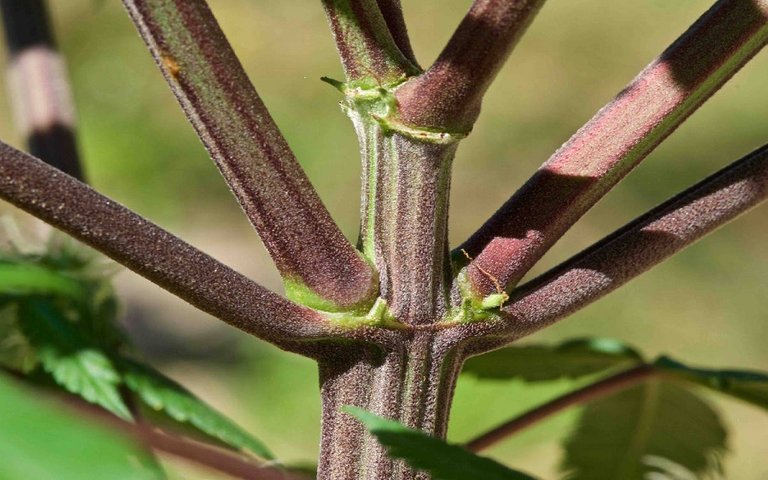Cannabis is a plant that has been used for medicinal and recreational purposes for thousands of years. The plant's various strains are known for their unique characteristics, including their aroma, flavor, and physical appearance. One such feature that has fascinated cannabis growers and enthusiasts is the purple coloration that can be seen in the plant's stems, leaves, and flowers.
The purple coloration in cannabis is due to the presence of pigments known as anthocyanins. Anthocyanins are a group of water-soluble pigments that are found in many plants, including grapes, blueberries, and eggplants. These pigments are responsible for the vibrant colors that can be seen in these plants. In cannabis, anthocyanins can give the plant's stems and leaves a range of colors, including purple, blue, and red.
The exact reason why cannabis plants produce anthocyanins is still not fully understood. However, it is believed that these pigments play a role in the plant's defense against environmental stressors such as UV light, cold temperatures, and pests. Anthocyanins have been shown to protect plants from UV light damage by absorbing and dissipating excess light energy. Additionally, these pigments can also act as antioxidants, helping to neutralize harmful free radicals that can damage the plant's cells.
The production of anthocyanins in cannabis plants is influenced by a variety of factors, including genetics, temperature, light exposure, and nutrient levels. Certain strains of cannabis are more likely to produce anthocyanins than others, and some growers even breed plants specifically for their purple coloration. Temperature is also an important factor, as lower temperatures can stimulate the production of anthocyanins. Light exposure is another key factor, with plants exposed to higher levels of UV light producing more anthocyanins. Finally, nutrient levels can also influence the production of anthocyanins, with some nutrients such as phosphorus and potassium being particularly important.
In conclusion, cannabis plants can have purple stems and leaves due to the presence of pigments known as anthocyanins. While the exact reason for the production of these pigments is still not fully understood, it is believed that they play a role in the plant's defense against environmental stressors. The production of anthocyanins is influenced by a variety of factors, including genetics, temperature, light exposure, and nutrient levels. As the cannabis industry continues to grow, it will be interesting to see how growers and enthusiasts continue to explore and appreciate the unique characteristics of this fascinating plant.

Yes indeed it is a fascinating plant! Some people think purple cannabis only infects the looks, but that is so far from the truth.
Anthocyanins in cannabis’s adds to the entourage effect along with cannabinoids, and terpenes. I love purple herb because it does not give me anxiety like some other strains can give me at times. I especially love smoking on some Purp in the evening a little before bed:)
There is reasonable evidence that this article is machine-generated. Posting such content is considered fraud.
Fraud is discouraged by the community and may result in the account being Blacklisted.
Guide: Why and How People Abuse and Defraud
If you believe this comment is in error, please contact us in #appeals in Discord.